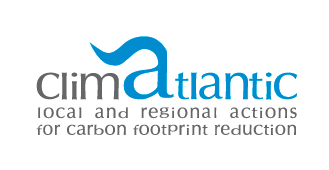NEWS & EVENTS : GENERAL INFORMATION

Commission to streamline rules on environmental impact assessments of projects
10.30.2012
The European Commission today outlined new proposals to streamline legislation on environmental impact assessments.
climatlantic //
The proposals are intended to lighten administrative burdens and make it easier to assess the potential impacts of major projects, without weakening existing environmental safeguards. Current levels of environmental protection will be strengthened, and businesses should enjoy a more harmonised regulatory framework.
Environment Commissioner Janez PotoÄnik said: "For the past 25 years, the EIA Directive has helped ensure that environmental considerations are integrated into decision-making for projects. This has improved the sustainability of countless projects, while also empowering citizens and ensuring that they are informed and consulted before decisions are made. But loopholes need to be fιxed, in particular concerning the quality of the assessment process, to make sure that projects that will affect the environment are properly assessed."
The EIA Directive entered into force more than 25 years ago. It has been amended several times, but, following a wide stakeholder consultation, the Commission decided the time has come for a comprehensive overhaul, adapting it to developments in policy and to legal and technical developments. The changes are also forward looking, and emerging challenges that are important to the EU as a whole in areas like resource efficiency, climate change, biodiversity and disaster prevention will now be reflected in the assessment process.
The proposed changes include:
1· Adjusting the procedure that determines whether an environmental assessment is needed. This will ensure that only projects with significant environmental impacts are subject to such an assessment. Projects adapted to reduce their impacts and smallscale projects with local impacts should be approved more swiftly at lower cost, leaving authorities more time to focus on assessments of major projects with large-scale environmental impacts.
2· Strengthening rules to ensure better decision-making and avoid environmental damage. Împacts from alternative proposals will need more systematic consideration, and competent authorities will need to explain the reasons behind their decisions more clearly.
3· Streamlining the various stages of the EIA process, by introducing timeframes and a new mechanism to ease the process when several assessments are required and several authorities involved. These changes will bring more legal certainty and accelerate the process, without compromising the quality of the assessment.
Today's proposals are the result of a revision process that included wide consultations, and studies on the effectiveness of existing rules and the impact of possible amendments.
Next Steps
The proposed measures will now be considered by the European Parliament and the Council. Once the text is agreed, it will become EU law.
Background
The aim of the EIA Directive is to ensure that projects which are likely to have a significant effect on the environment are adequately assessed before they are approved. Hence, before any decision is taken to allow such a project to proceed, the possible impacts it may have on the environment (both from its construction or operation) are identified and assessed. Developers can then adjust projects to minimise negative impacts before they actually occur, or the competent authorities can incorporate measures to avoid, reduce or compensate environmental impacts into the project approval.
The Directive also ensures early public participation in the environmental decision-making procedures. In particular, members of the public concerned must be given the possibility to comment while all options are still open to the competent authority, i.e. before a final decision is taken on the request for development. When approving a project, the competent authority is required to inform the public, including on the measures envisaged to avoid, reduce or compensate environmental impacts.
For more information:
http://ec.europa.eu/environment/eia/home.htm








